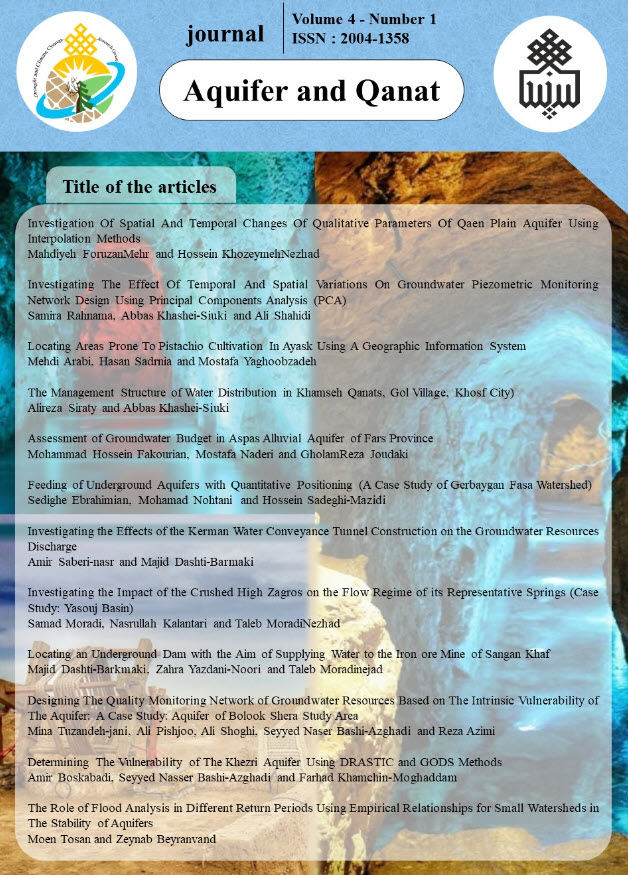Document Type : Original Article
Authors
Professor, Department of Water Science and Engineering, College of Agriculture, University of Birjand
Abstract
Improper quality water use causes problems such as soil salinity and reduced soil permeability. In this study, groundwater quality in Sirjan city has been investigated using common diagrams and parameters in water quality classification for agricultural and industrial uses. Archmap and mini-tab software has been used to graphically display changes in quality parameters in the region and statistical classification of data. The results of the study showed that well (W2) located in the northeast of the aquifer has a higher quality than other sample wells, which is in the range of good to acceptable according to Schuler diagram and in good range according to Wilcox diagram. The amount of magnesium, calcium, sulfate, chlorine and sodium in the well was less than the World Health Organization standard. Also according to the obtained results of well (W12), (W13), (W15), (W17), (W3), (W9) (W10 (W14), (W3) which are located in the northwest, west, south and southwest of the aquifer, both in terms of drinking and agricultural use, of poorer quality than other wells. Enjoys. According to the classified maps, for effective parameters in the Schuler method, the parts of spatial continuity of the data were examined and after preparing the map, locations with different qualities were identified. Also, according to the results obtained from the classification map of the EC parameter by Wilcox method, a large part of the aquifer is in the inappropriate class and only parts of the northeast, east and middle parts of the aquifer are in the middle class.
Keywords

